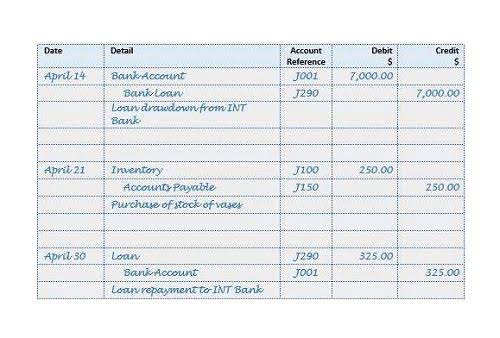
Liability: Definition, Types, Example, and Assets vs Liabilities

The balance sheet is one of three financial statements that explain your company’s performance. Review your balance sheet each month, and use the analytical tools to assess the financial position of your small business. Using the balance sheet data can help you make better decisions and increase profits. If it is expected to be settled in the short-term (normally within 1 year), then it is a current liability. A liability is a legally binding obligation payable to another entity.
Do you already work with a financial advisor?

Current and long-term liabilities are going to be the most common ones that you see in your business. When it comes to short-term liquidity measures, current liabilities get used as key components. Here are a few metrics and key ratios that potential investors and management teams look at to perform a financial analysis. Any mortgage payable is recorded as a long-term liability, though the principal and interest due within the year is considered a current liability and is recorded as such.
- Current liabilities are typically more immediate concerns for a company, as they are short-term financial obligations that require quick action.
- Take self-paced courses to master the fundamentals of finance and connect with like-minded individuals.
- A balance sheet is like a financial selfie, capturing a company’s financial status at a specific moment.
- Keep up with Michelle’s CPA career — and ultramarathoning endeavors — on LinkedIn.
- Accounts Payable refers to the amounts owed by a company to its suppliers or vendors for goods or services received, but not yet paid for.
Types of liabilities on a balance sheet
They are vital components of a balance sheet, which is one of the primary financial statements used by stakeholders to assess a company’s performance and sustainability. A liability is something that a person or company owes, usually a sum of money. Liabilities are settled over time through the transfer of economic benefits including money, goods, or services.
- He is a CFA charterholder as well as holding FINRA Series 7, 55 & 63 licenses.
- In all cases, net Program Fees must be paid in full (in US Dollars) to complete registration.
- If you’ve promised to pay someone a sum of money in the future and haven’t paid them yet, that’s a liability.
- In addition, liabilities impact the company’s liquidity and, in the case of debt, capital structure.
- Another popular calculation that potential investors or lenders might perform while figuring out the health of your business is the debt to capital ratio.
- The current month’s utility bill is usually due the following month.
Financial Health Check
- Liabilities play a crucial role in evaluating a company’s financial health.
- For example, if the company wins the case and doesn’t need to pay any money, the company doesn’t incur the contingent liability.
- The current/short-term liabilities are separated from long-term/non-current liabilities.
- Accounts payable is typically presented on the balance sheet as a separate line item under current liabilities.
- They can include a future service owed to others such as short- or long-term borrowing from banks, individuals, or other entities or a previous transaction that’s created an unsettled obligation.
- Businesses separate current and long-term liabilities based on due dates which help maximize cash flow efficiencies.
- It is essential for businesses to effectively manage their liabilities and maintain a healthy balance between debt and equity.
On the other hand, long-term liabilities, or non-current liabilities, extend beyond a year. Besides these two primary categories, contingent liabilities and other specific cases may also exist, further adding complexity to accounting practices. Long-term liabilities are debts that take longer than a year to repay, including deferred current liabilities. Contingent liabilities are potential liabilities that depend on the outcome of future events. For example contingent liabilities can become current or long-term if realized. Checking these parts helps you see if the company can pay its bills now and in the future.
Liabilities are debts and obligations of the business they represent as creditor’s claim on business assets. Contingent liabilities are potential future obligations that depend on the occurrence of a specific event or condition. These liabilities may or may not materialize, and their outcome is often uncertain. Examples of contingent liabilities include warranty liabilities and lawsuit liabilities. Deferred revenue indicates a company’s responsibility to deliver value to its customers in the future and helps provide a clearer picture of the company’s long-term financial obligations.
- Liabilities are incurred in order to fund the ongoing activities of a business.
- An equitable obligation is a duty based on ethical or moral considerations.
- However, other liabilities such as accounts payable often don’t have interest charges since these are due in less than six months.
- Assets represent resources a company owns or controls with the expectation of deriving future economic benefits.
- The total liabilities of a company are determined by adding up current and non-current liabilities.
- As a small business owner, you’re going to incur different types of liabilities as you operate.

All of our content is based on objective analysis, and the opinions are our own. The answer to the third and final question—regarding when the amount is to be paid—enables the statement user to assess separately the short-run and long-run solvency of the company. In the General Motors automobile warranty case, the liability occurs at the time of sale because at that time the firm obligates itself to make certain repairs.

Other line items like accounts payable (AP) and various future liabilities like payroll taxes will be higher current debt obligations for smaller companies. There are many different types of liabilities including accounts payable, payroll taxes payable, and bank notes. Basically, any money owed to an entity what are liabilities in accounting other than a company owner is listed on the balance sheet as a liability. Liabilities play a crucial role in evaluating a company’s financial health. By analyzing the types, amounts, and trends of a company’s liabilities, it is possible to gauge its financial position, stability, and risk exposure.
Definition of Liability

© 2021 Oak Tree. All rights reserved.


Comments are closed.